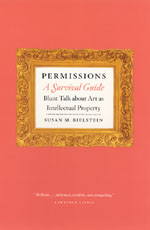An endangered species of publishing
 An article in the August 4 issue of the Chronicle of Higher Education quotes Susan Bielstein, our executive editor for art and architecture: “The art monograph is now seriously endangered and could well outpace the silvery minnow in its rush to extinction.”
An article in the August 4 issue of the Chronicle of Higher Education quotes Susan Bielstein, our executive editor for art and architecture: “The art monograph is now seriously endangered and could well outpace the silvery minnow in its rush to extinction.”
Publishing art monographs is financially challenging, for the author and for the publisher. To obtain an image of a work of art suitable for reproduction, the author usually has to pay a permission fee to the owner of the work—a museum, say—even if the work itself is in the public domain. An author might shell out tens of thousands of dollars for such fees. Costs are high for the publisher as well, what with color illustrations, coated paper stock, and the durable binding needed for a hefty, oversized book.
The CHE article discusses the state of art-history publishing at several university presses and a forthcoming Mellon-funded report, “Art History and Its Publications in the Electronic Age.” The article concludes: “All parties agree that it is harder than ever to navigate what Ms. Bielstein calls ‘the ecosystem of rights publishing.’ What’s fair use? Should a museum be able to charge for a reproducible image of an out-of-copyright object in its collection? Most do. And as digital publication tempts more and more publishers and scholars, how will they protect images that appear in an electronic book or an electronic version of a journal article?”
These issues of art and copyright are the subject of Bielstein’s recently-published book, Permissions, A Survival Guide: Blunt Talk about Art as Intellectual Property, an invaluable compendium of insight and advice for authors and others working in the visual arts. Read an excerpt from the book.